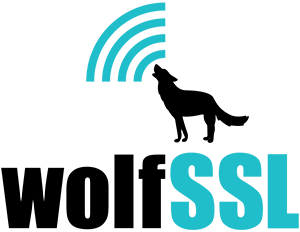A recent backdoor breach in Debian SSH connections, facilitated by an adversarial code contribution to the xz/liblzma project[1], underscores the need for rigorous vetting of code, contributors and intent. wolfSSL Inc. implements stringent procedures to prevent scenarios like malicious code merges. For non-employee code contributors: An authorized wolfSSL Inc. employee provides written acceptance to evaluate […]
Read MoreMore TagCategory: Uncategorized
Introducing wolfPKCS11 Release v1.3.0: Enhanced Visual Studio Support and Bug Fixes
We are thrilled to announce the release of wolfPKCS11 v1.3.0, packed with exciting enhancements and bug fixes aimed at elevating usability and reliability. Let’s delve into the highlights and their associated benefits: Summary: Visual Studio Support: Now compatible with Visual Studio, offering a seamless development experience for Windows-based projects. Resolved Cast Warnings and Portability Issues: […]
Read MoreMore TagInfineon wolfSSL Modus Toolbox Support and wolfTPM Firmware upgrade support
We are pleased to announce support for updating the Infineon TPM firmware in wolfTPM. Infineon is the first TPM vendor to open source their firmware update procedure and process in their latest Infineon SLB9672 (SPI) and SLB9673 (I2C) versions of the TPM 2.0 module. This requires a high level of confidence in their update process […]
Read MoreMore TagWhere to find the Wolves: wolfSSL is heading to Embedded World
Secure your Embedded Projects with wolfSSL, the Best Tested Cryptography. The wolfSSL team is heading to Embedded World Exposition and Conference April 9th through the 11th in Nuremberg Germany. Come stop by and meet our team at Hall 4 Booth 612. Discover how wolfSSL’s advanced security solutions can safeguard your embedded development. If you prefer […]
Read MoreMore TagLive Webinar: wolfSSL Training Week
Ready to boost your cybersecurity expertise? Join wolfSSL for an exclusive Training Webinar, wolfSSL Training Week. Part 1 is scheduled for April 3rd at 10 am PT, followed by Part 2 on April 4th at 10 am PT! Led by wolfSSL Engineering Manager, Chris Conlon, this comprehensive session caters to both beginners and seasoned professionals, […]
Read MoreMore TagEvery hardware cryptography scheme wolfSSL has ever enabled in 2024
At wolfSSL we support hardware cryptography for a wide range of platforms. The benefits of hardware cryptography include reduced code footprint size, improved security, acceleration of cryptographic operations, and utilization of true random number generators. For example, this allows everything from wolfBoot to TLS cipher suites to enjoy acceleration of cryptographic operations. Furthermore, we have […]
Read MoreMore TagcURL Up 2024 – Save The Date
Exciting news from cURL! We’re thrilled to announce the return of curl-up, scheduled to take place in Stockholm, Sweden from May 4th to the 5th! Our goal is to bring the community together for an unforgettable weekend of collaboration and learning. We’re inviting all curl contributors, maintainers and fans to join us. Perfect opportunity for […]
Read MoreMore TagwolfSSH 1.4.17 Now Available!
We are excited to announce the release of wolfSSH version 1.4.17, which comes packed with several improvements, new features, and important fixes to enhance security and functionality. This release is a testament to our commitment to providing a robust and reliable SSH library for developers. Vulnerability Fixes In this version, we have addressed a critical […]
Read MoreMore TagWhere to find the Wolves: wolfSSL is heading to Embedded World
Secure your Embedded Projects with wolfSSL, the Best Tested Cryptography. The wolfSSL team is heading to Embedded World Exposition and Conference April 9th through the 11th in Nuremberg Germany. Come stop by and meet our team at Hall 4 Booth 612. Discover how wolfSSL’s advanced security solutions can safeguard your embedded development. If you prefer […]
Read MoreMore TagLive Webinar: Getting Started with libcurl
Join us for an exclusive live webinar hosted by Daniel Stenberg, the founder and maintainer of cURL, as he presents ‘Getting Started with libcurl‘ on March 28th at 10 am PT! Daniel will provide invaluable insights into the foundational concepts and best practices of libcurl, the widely acclaimed client-side URL transfer library. Known for its […]
Read MoreMore Tag
